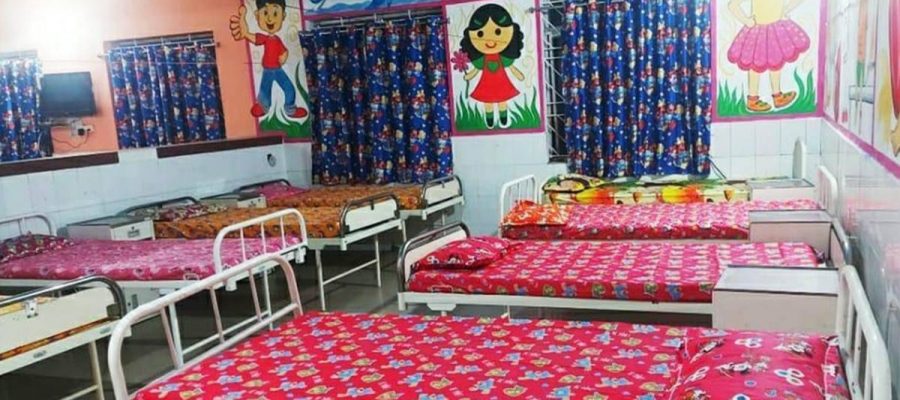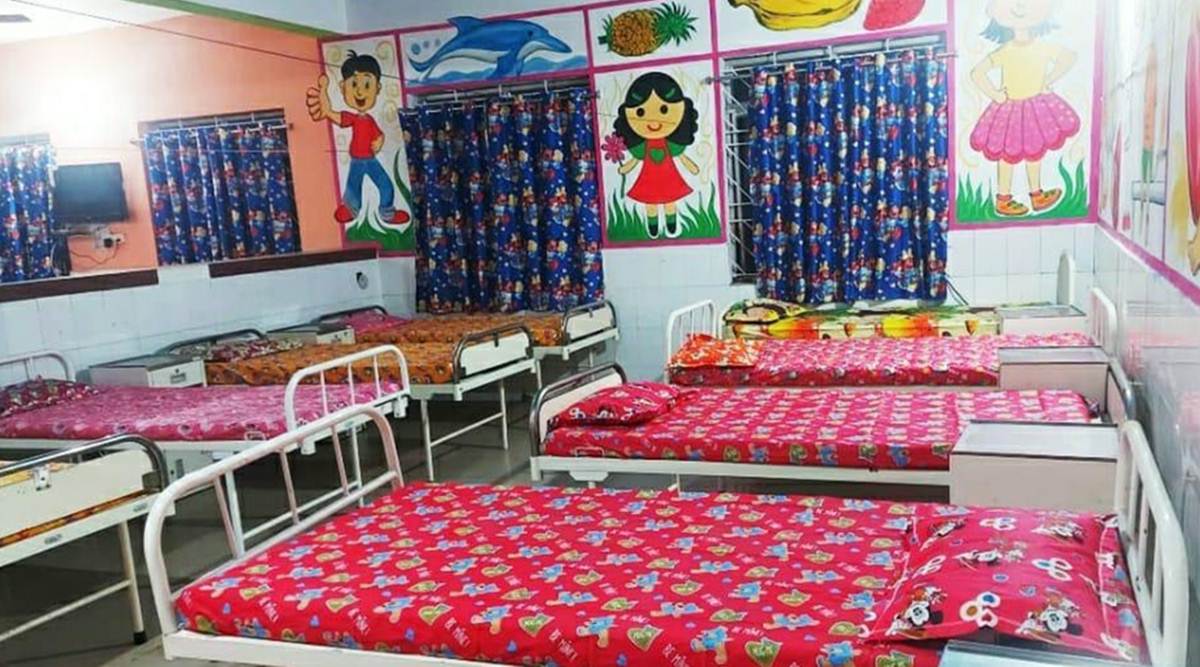The state has 39 neonatal ICU beds and only 20 paediatric ICU beds in Ranchi, Dhanbad and Jamshedpur, as per the manual.
The Jharkhand government has come out with what it calls the “first such detailed document prepared by any state in India” to deal with the possibility of a third wave leading to increased number of Covid-19 infections among children.
Titled ‘Manual for Preparation, Prevention and Planning for Covid-19 third wave in Jharkhand: The way forward’, the guidelines issued on Wednesday set a higher estimate of 14 lakh children at risk and point to the required infrastructure. It mentions plans to set up 20 bedded paediatric ICUs in every district, convert all Malnutrition Treatment Centres to High Dependency Units to ramp up infrastructure, guidelines for nutrition, and painting the walls of pediatric wards with cartoon characters to make them child-friendly. The manual also analyses gaps in human resources as well as drug requirements for the third wave among paediatric age groups.
The guidelines have been prepared by a state-level five-member Empowered Committee — set up for the third wave — with the help of 14 clinical experts and health department officials. It has also considered suggestions at a webinar last month by Dr Roderico Ofrin, WHO representative to India; Dr Ashok Deorari, HOD Paediatrics, AIIMS Delhi; DR Neelam Mohan, Director of Paediatrics, Medanta and Dr Pardeep B S, HOD Epidemiology, NIMHANS.
The manual considers two scenarios, with 10 per cent and 5 per cent positivity, among the total 1.43 crore people up to the age of 18 in the state. Considering 10 per cent positivity, it points to the requirement of 9,040 oxygen beds, 1,004 HDU beds and 2,009 ICU beds. It halves the requirement considering a 5 per cent positivity rate.
The state has 39 neonatal ICU beds and only 20 paediatric ICU beds in Ranchi, Dhanbad and Jamshedpur, as per the manual.
The manual states that 43 per cent children in the state exhibited some or the other kind of malnutrition pre-pandemic and they are vulnerable to many communicable diseases, including Covid. The manual has asked for setting up of HDUs to provide specialist care for children requiring “more observation, intervention or monitoring than can be safely provided on the general wards”. “During the expected third wave of Covid-19 amongst children, an estimated 10 per cent of the moderate cases will require High Flow Oxygen Therapy. The facility of HDU is not available in the district hospitals of the state, so planning of upgradation of Malnutrition Treatment Centres (MTCs) to provide these services has been devised. At present, a total of 1,105 beds are available in MTCs as compared to total estimated requirement of 2,260 beds along with various equipment,” the manual said.
Dr Shantanu Agrahari, Empowered Committee Chairman and state nodal officer for Covid-19 management, said the purpose of the document is to provide “clear and actionable guidance” for safe operations. “This is the first such detailed document prepared by any state in India. The manual has taken into account the suggestions given by eminent doctors during the webinar held last month. It emphasises on the general guiding principles of management of Covid in the paediatric population by assessing the availability of paediatric and neonatal beds (ICU/non-ICU) in districts both in public and private settings by involving private paediatricians.”
Bhuvnesh Pratap Singh, the panel’s Vice-Chairman and another state nodal officer for Covid-19 management, said that teleconsultation services will also be promoted at all levels to prevent overcrowding as not all require hospitalisation. “Standard package of services to be delivered by Covid paediatric care unit at hospitals are paediatric OPD, ETAT (Emergency Triage Assessment and Treatment), HDU, paediatric ward and isolation ward, IYCF counselling etc. The detailed… guidelines are also in the module which will be the easy reference for health care professionals to handle the cases quickly and more efficiently.”
“The third wave may be like a cyclone and we will scale our infrastructure accordingly…It may be possible that we may not need 20 PICU beds in a district at all, and that pediatric wards may be changed to geriatric wards in future. However, we have told all districts to ramp up their infrastructure and some are doing it simultaneously.”
The manual said that in Jharkhand, around 9,000 children below the age of 14 years were found Covid-positive with “some admissions” in hospitals. “In the state, the rate of Covid-19 in children is lower than in adults. However, due to high transmission rate and vaccination among adults and elderly, it seems that age shifting is evident and a greater number of children are getting affected in the second wave. Some serious conditions like multisystem inflammatory syndrome are observed in many districts recently… and require detailed planning.”
It also lays down guidelines for “child-friendly wards” ensuring the involvement of private paediatricians and hospitals in the planning process for the district. “Paediatric wards should be established as BaLa (Building as a Learning Aid) Model. Walls should be painted with motivational themes, small slogans to be painted as per child psychology.”
One of the most important aspects it covers is “Nutrition and Dietary Guidelines for Infants and Children with Covid”. “Exclusive Breastfeeding (only mother’s milk, no water, honey or any pre-lacteals for children up to 6 months of age) and rooming-in with mother. If rooming-in is not possible because of the sickness in the neonate or the mother, the neonate should be fed breast milk of the mother by a nurse or family member who has not been in contact (with the infected).”
Source: Read Full Article


